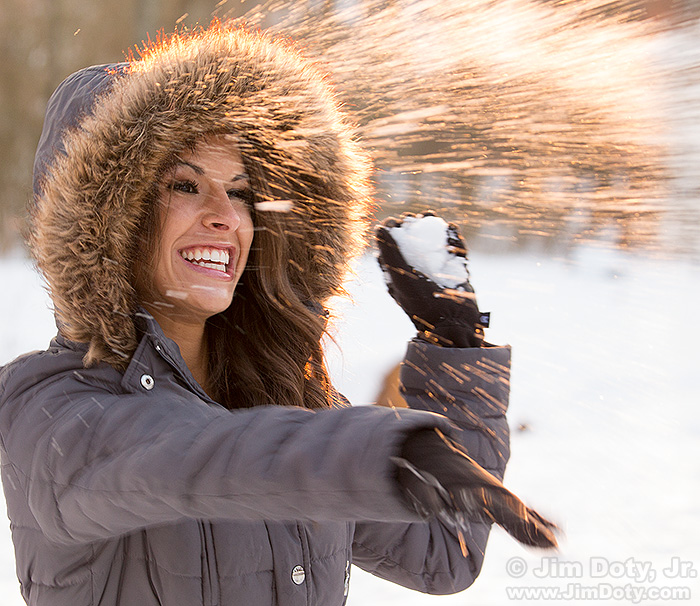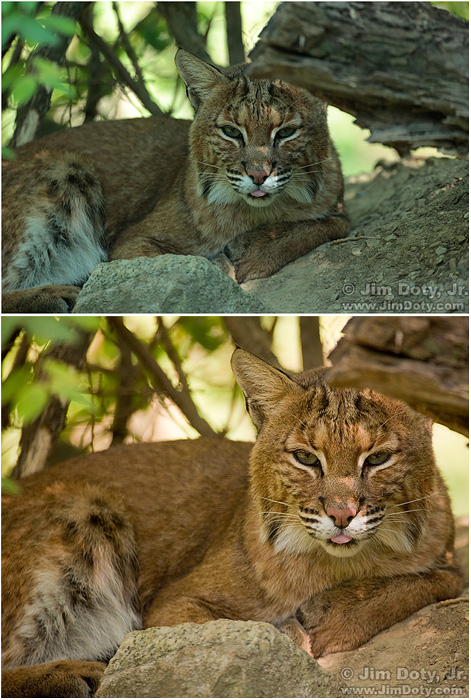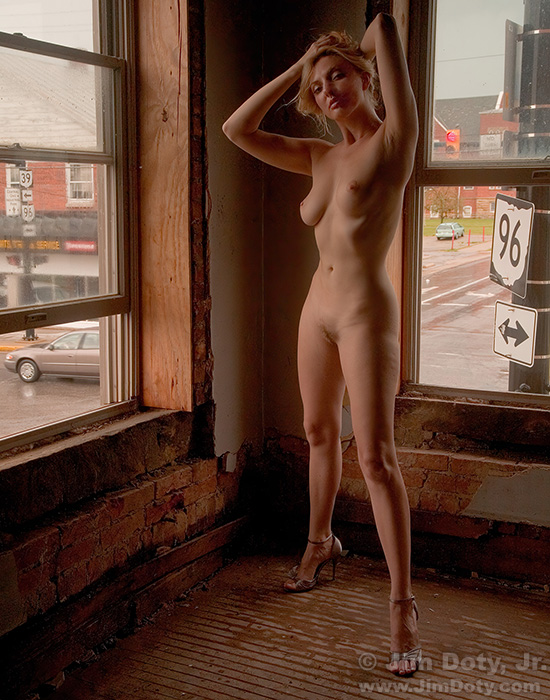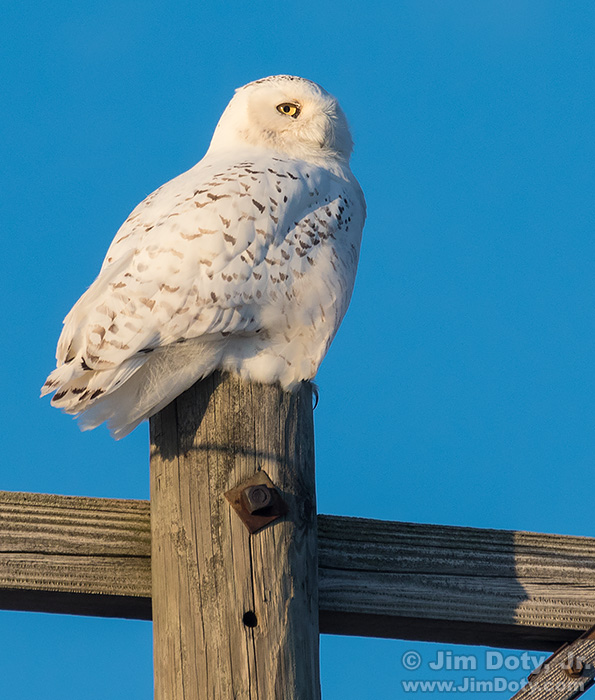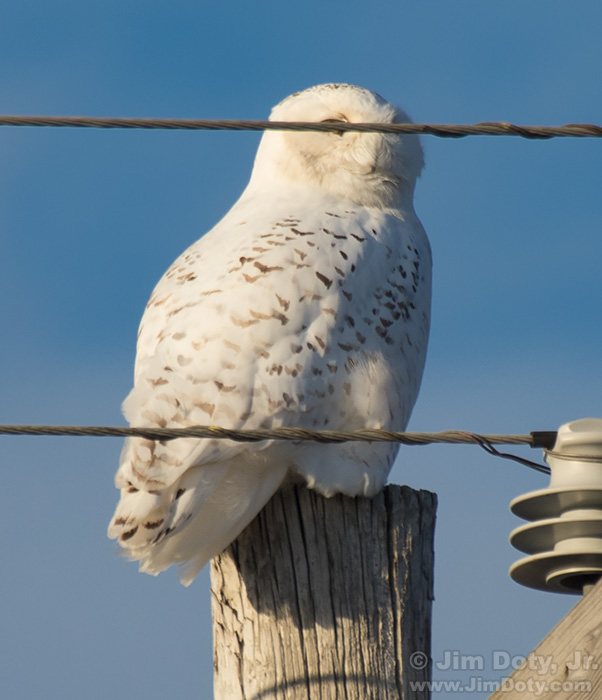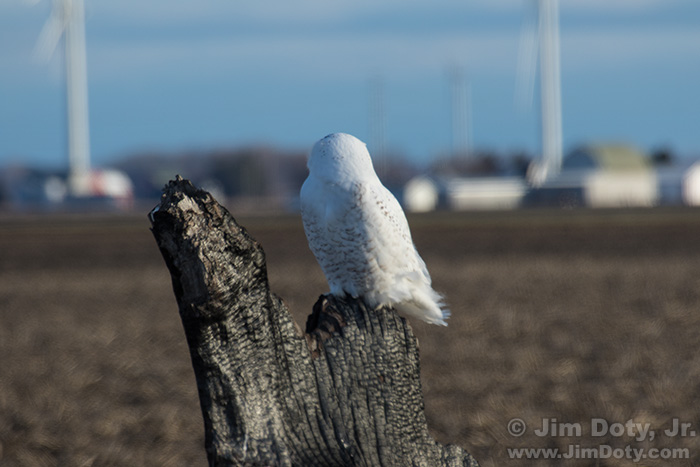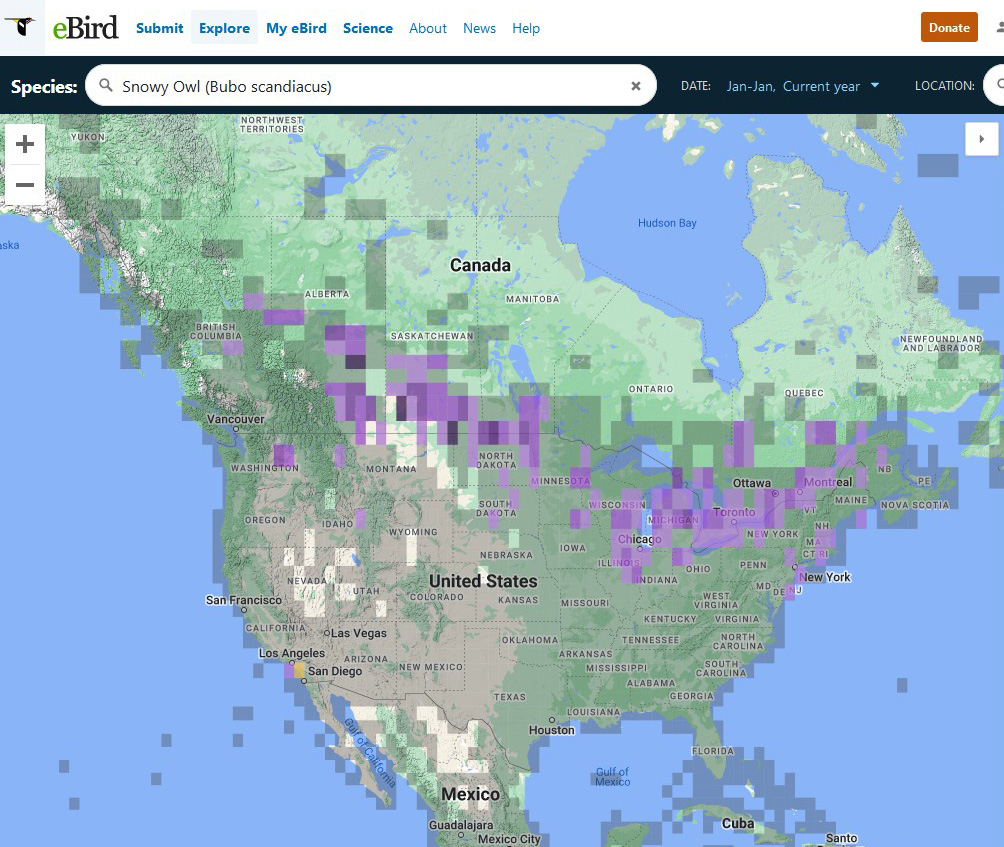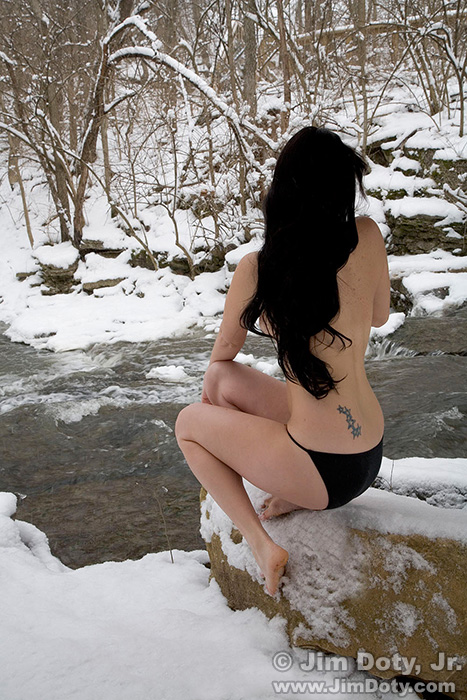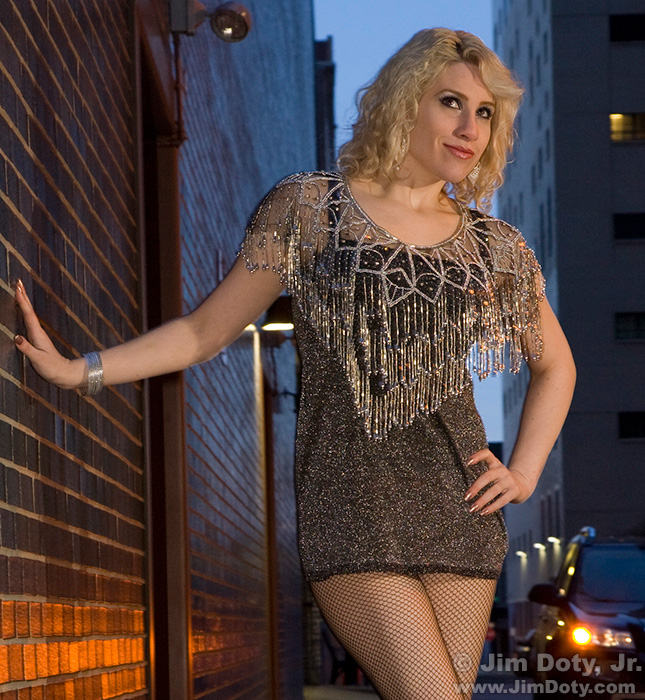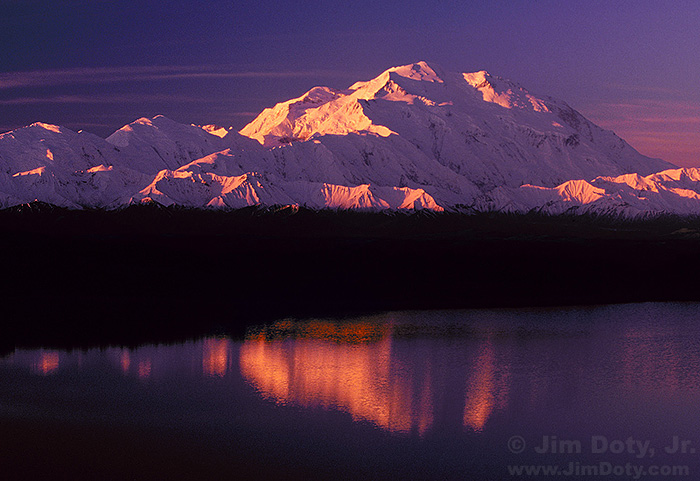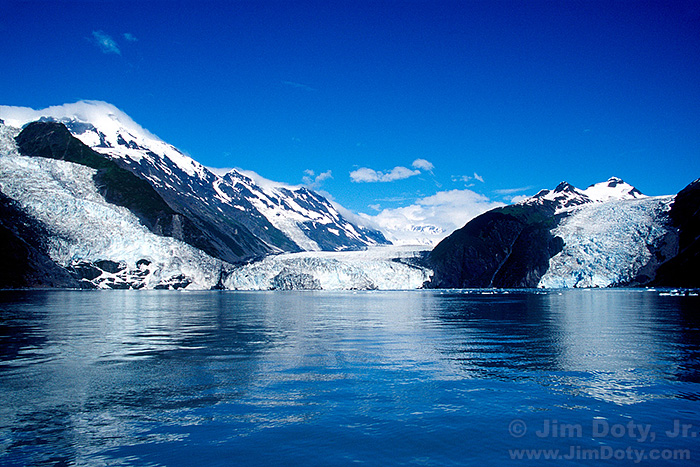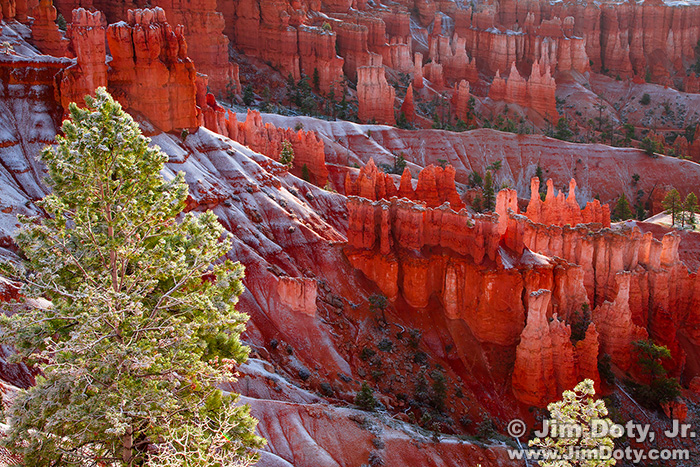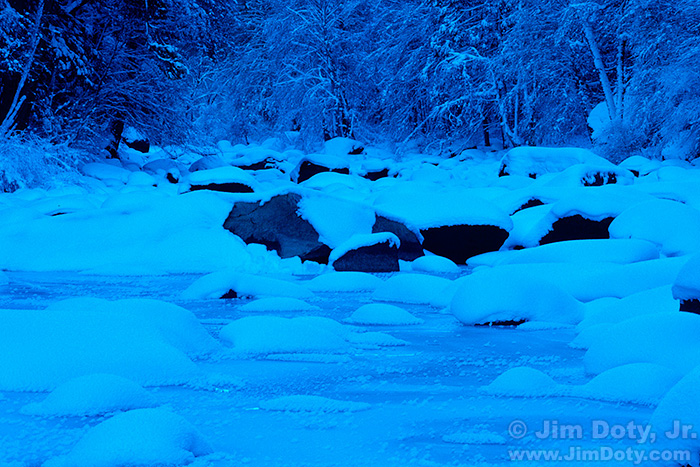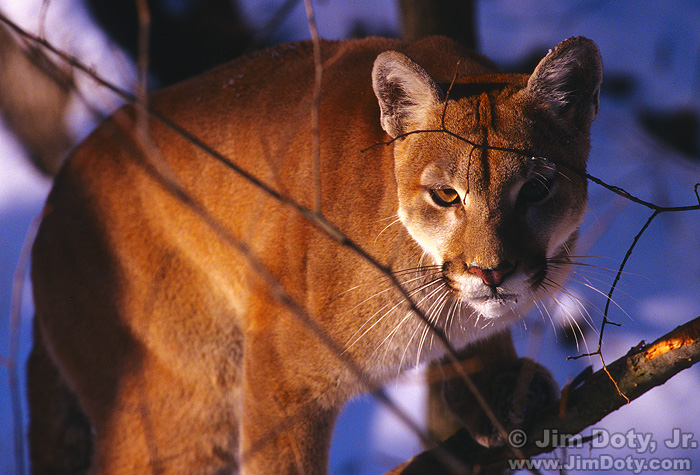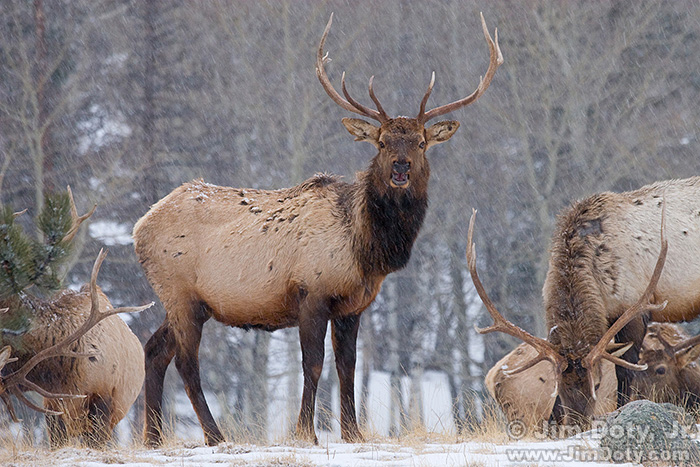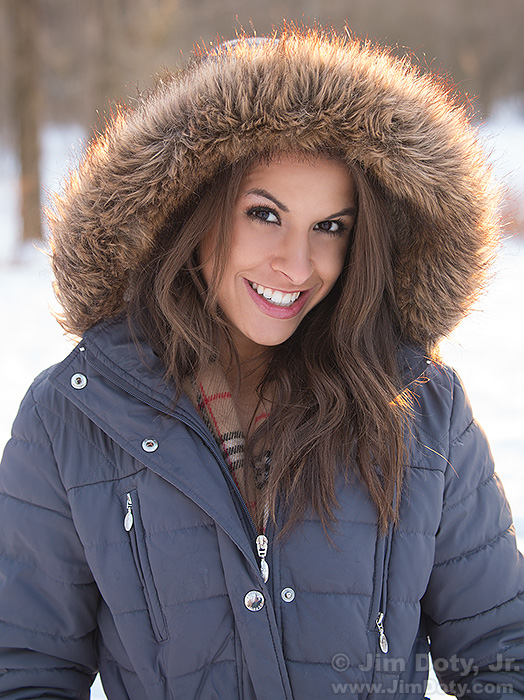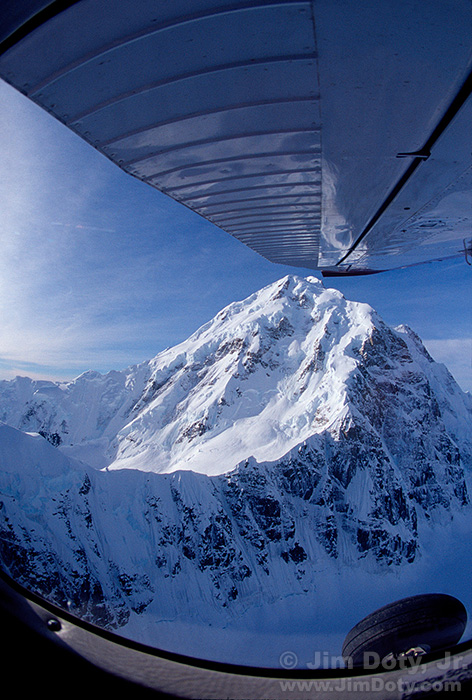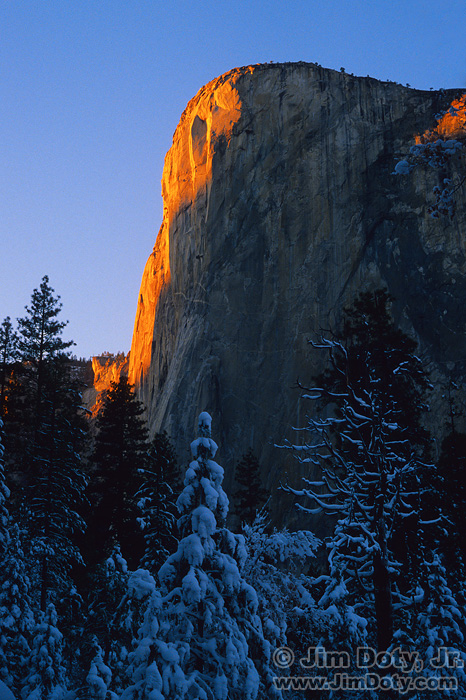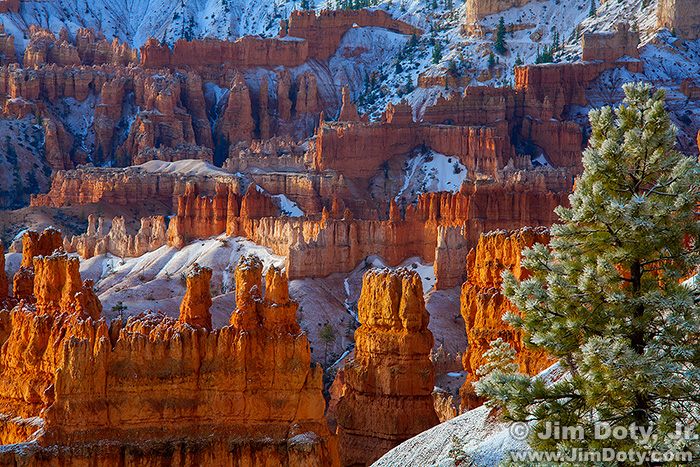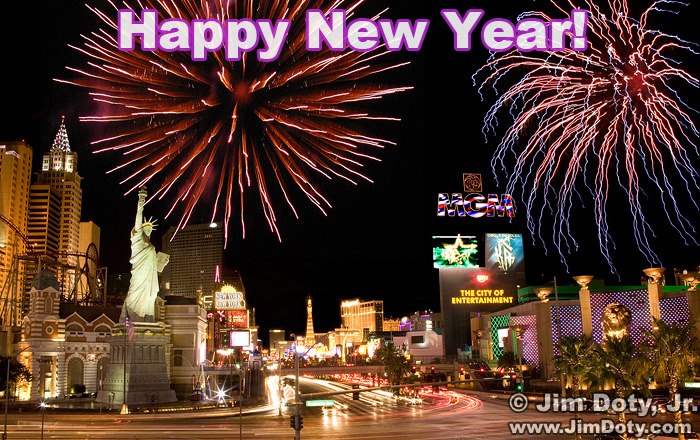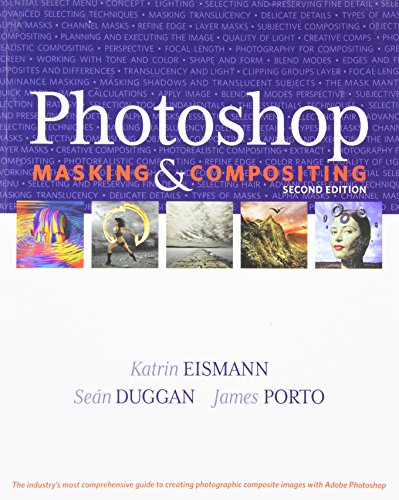Today is Martin Luther King, Jr. Day in the United States. This is a 5 minute highlight from the end of the speech which was delivered at the Lincoln Memorial August 28, 1963. A video of the whole 17 minute speech is here.
MARTIN LUTHER KING – “I have a dream” – text

Martin Luther King Jr.
Today is Martin Luther King Day in the United States. Martin Luther King, Jr. was born January 15, 1929. He was a Baptist minister and a prominent civil rights advocate. King was the youngest person to receive a Nobel Peace Prize when it awarded to him in 1964. He was assassinated April 4, 1968 in Memphis, Tennessee.
One of his most famous speeches was delivered at the Lincoln Memorial August 28, 1963. Often referred to as the “I have a dream” speech, it is one of the most significant and powerful speeches of the 20th century. A portion of the speech follows. Links to the full speech and an audio file are at the end of this post.
It’s Winter!
Photos That Move Me: Sudan by Ami Vitale
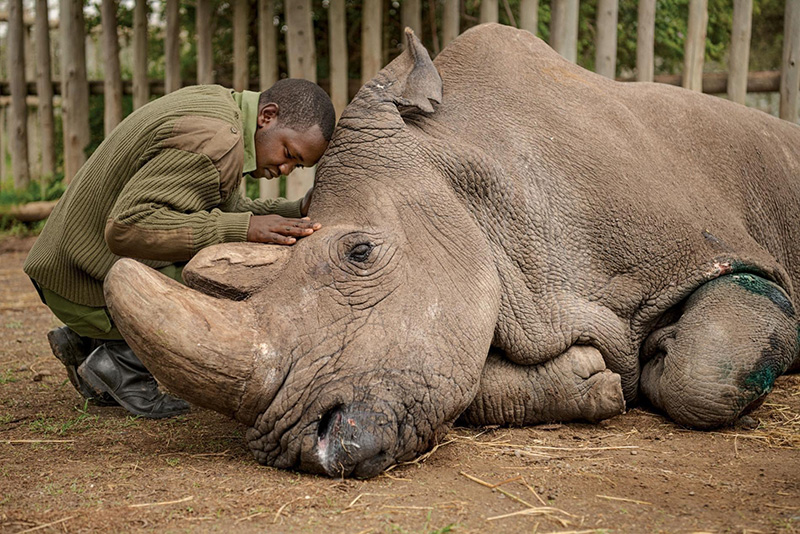
Joseph Wachira, a keeper at the Ol Pejeta Conservancy in Kenya, says goodbye to Sudan before he died in 2018. Sudan was the last male Northern White Rhino in existence. He became, for a while, one of the most beloved animals on the planet. Weighing 2,000 pounds, he was as docile as a Golden Retriever. People came from all over the word to see him, to touch him. Then they would return to their cars and cry. He is survived by Najin and Fatu, his daughter and granddaughter, the last female Northern White Rhinos.
Bobcat: Fast and Simple Tonality Adjustments with Adobe Camera Raw
With the right software, you can make quick improvements in your images. There are some lighting situations where it is almost impossible, and certainly not practical, to get the correct white balance setting in the camera. This bobcat photo is an example. The best, fastest, and simplest solution is to get the right while balance setting after the fact using software like Adobe Camera Raw (ACR). A few minutes work with ACR can make a big difference in the look of your photos.
Topaz Sharpen AI Reduces Digital Noise
It started with an invitation to photograph a first class model in a gutted hotel. How could I say no? Most of the images from our photo shoot came out great, but the photo above, at least in the original version, was a challenge for my digital camera. The contrast range was too much for the camera to handle (this was back in 2008) so the well lit part of Tiana’s body looked just fine but the darker side was really noisy. Digital cameras were a lot noisier 14 years ago.
“Vincent” (Starry, Starry Night) by Don McClean
Vincent van Gogh lived a tortured life. He suffered from poor health and struggled with depression. He spent occasional periods of time in psychiatric hospitals. In an angry confrontation that ended his friendship with artist Paul Guaguin, he famously severed part of his own left ear with a razor. He ultimately took his own life with a gun shot wound to the chest at the age of 37. During his life he was considered a madman and a failure. Appreciation for his art did not happen until after his death. He is one of my favorite artists. Don McLean wrote this beautiful and haunting reflection on his life. Paintings by Van Gogh were added by “wysty67”, the creator this video.
How to Photograph a Musician in the Cold and Snow
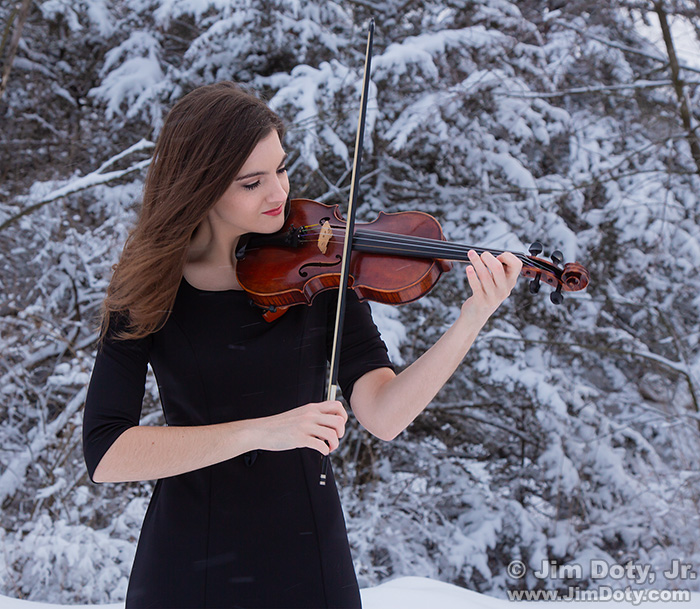
It was my happy privilege to do winter portraits of Beth Presler who is a superb violinist. This article has suggestions for photographing any musician on a cold, snowy winter day.
How To Series: Snowy Owl Photography
If there are cold enough temperatures and plenty of snow cover on the ground, the northern United States has a winter invasion of Snowy Owls. These are magnificent creatures and well worth your photographic time and attention. This series is filled with tips on how to find and photograph snowy owls.
Snowy Owl Photography: Solving A Photo Problem (And the Right Way to Exit Your Vehicle)
When I am traveling with my highly trained and high paid photographic assistant it is his job to remove trash barrels when they are in the way, cut down trees that spoil my view, run out into the meadow and scare off the cow elk that are in front of the bull elk I want to photograph, rip boards off of old barns that don’t look quite distressed enough, pull on the whiskers of a sleeping cougar to wake it up, and cut down utility lines that are obstructing a clear view of my subject. But he wasn’t with me on this trip due to sitting in jail over a minor incident in Yosemite. So I had a challenge on my hands that I had to solve myself.
I am kidding, of course. The prior paragraph was inspired by really crazy things a few photographers do but shouldn’t be doing.
Snowy Owl Photography: Control the Background for Better Images
A simple change of background can turn a disappointing wildlife photo into a great one. Professional wildlife photographers think about backgrounds all the time and do everything they can to improve the background. Less experienced wildlife photographers are so excited to find an interesting creature that they give the background precious little thought.
A Snowy Owl Photo Expedition
What is a Snowy Owl expedition really like? This article is your chance to find out. Join me for a two day photo safari! I give you tips and photo suggestions along the way, and you get to see how I prepare, plan, and adapt on a photo trip. I tell you what went right and what went wrong so this is also about what to do when things don’t go according to plan.
How to Find and Photograph Snowy Owls
Winter Photography Safety Essentials
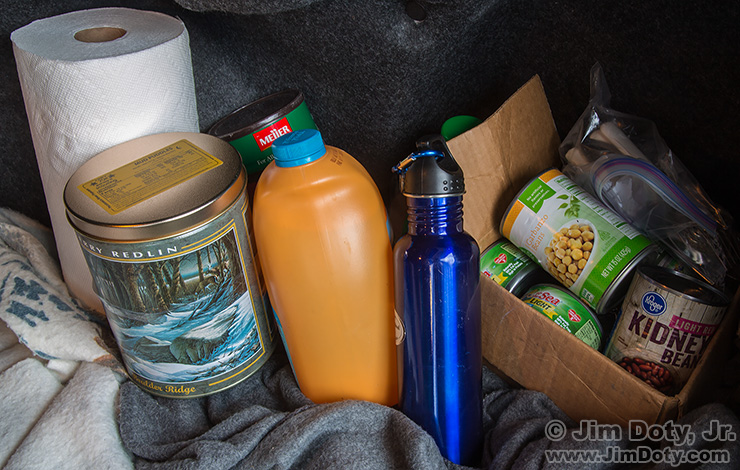
Some of the winter travel items I carry in the trunk of my car. This is the “kitchen” and “furnace”.
I grew up in Colorado where strange weather can strand you in any month of the year. Even though it is rare, I’ve seen blizzards in the Colorado high country in July. So I learned to carry some safety essentials when doing winter photography in remote locations. You never know when you might be stranded for several hours, a whole day, or longer, until the blizzard abates and someone can come find you. This is what I carry in my car when I hit the road in the winter and pretty much any time I am going to be in the High Rockies. I include a few winter travel tips, too.
How to Photograph a Nude Model in the Cold and Snow
It is difficult enough to create a beautiful nude image under normal circumstances, much less in the cold and snow. You need to bring some significant skills and experience to the task. So does your model.
How To Work With A Model (or Anybody Else) When The Windchill is 4°
You would think a windchill of 4° Fahrenheit (-16°C) would be too cold for a photo shoot, but not with some models. We booked this January shoot weeks in advance so we knew it would be cold, but we had no idea how cold until the day arrived. Here’s the story behind this image and how to work with a model (or anybody else) when it is so cold.
The Sunny f16 Rule Isn’t Reliable in Winter
The Sunny f16 rule is really useful on bright sunny days in the spring, summer, and fall, but you can’t rely on it for accurate exposures on bright, snowy winter days. It will often lead you astray and you will have seriously blown out highlights. There are much more accurate ways to meter in the winter.
Testing Your Camera’s Snow Exposure Latitude
The “snow exposure latitude” for every camera is different. You won’t find it in your camera’s manual but it is easy to determine with a do-it-yourself test. Why does it matter? If you don’t know the snow exposure latitude for your camera and how to apply it to your images, the color and quality of your winter photos will suffer.
How to Protect Your Camera Gear in the Cold and Snow
Cold and snow can cause a lot of damage to your camera gear. Something as simple as shooting outside and taking your camera inside your house or car can cause hidden damage that won’t show up until days or weeks later. The simple steps in this article could save you hundreds of dollars in repair bills.
Metering Nighttime Winter Scenes
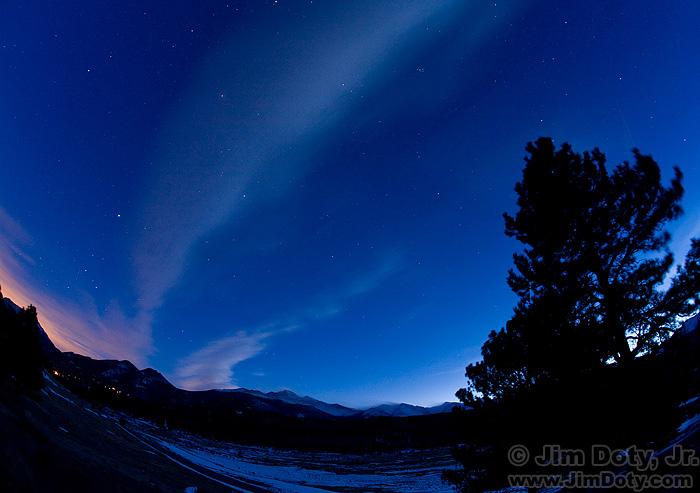
Twilight, Rocky Mountain National Park. Sirius, Canis Major, Orion, Taurus, the Hyades star cluster, and the Pleiades star cluster are all visible in the fading light. Click for a larger version.
You can photograph the night sky year around, but winter brings an added bonus: SNOW! When you don’t have the benefit of moonlight, most of the year land forms a dark to black silhouetted skyline against the night sky. In winter you have the possibility of including the highly reflective snow. You can see both in this photo. Any place not covered with snow is very dark to black. Having reflective snow is why winter is the favorite time of year for a lot of photographers to go out and photograph the night sky.
Metering Evening Winter Scenes
Just like metering daytime winter scenes, the key to metering evening winter scenes is knowing what to meter and deciding how much exposure compensation to use.
Metering Wildlife in the Snow, Part Two
Most wildlife are medium to dark in tone, making them a challenge to meter properly in the bright, white tones of winter. If you trust one of your camera’s automatic exposure modes, the odds are good you won’t get the best exposure. If you switch over to manual exposure and make the right decisions, you can get great exposures and better quality photos (more about that later).
Metering Wildlife in the Snow, Part One
Metering dark toned wildlife in the snow is a major exposure challenge. It is usually best to avoid large “burned out” areas (washed out, featureless white) in a nature or landscape photograph, but with properly exposed snow, the wildlife can be so dark as to lose all texture. On other hand, metering for the wildlife can burn out the snow. So what do you do? And what about the complications of metering white animals?
Metering People in the Snow
The white snow in a winter scene can and often does fool a camera meter into underexposing a portrait, so here are the steps to take to get the right exposure. I throw in a few portrait suggestions too.
Metering Daytime Winter Scenes
Metering for scenes with a lot of snow can be tricky since the bright snow fools the camera meter. I see a lot of winter photos with gray snow, which means the camera meter did exactly what it was designed to do. The solution is quite simple provided you know what to do.
How To Series: Winter Photography
In addition to all of the usual photographic challenges, winter provides some extra complications, especially in terms of metering. So I began this series of articles on winter photography. Check out the links below. The articles will help you meet the unique challenges of winter photography. So get out there, have fun, and create some great winter images!
One Photographer and Nine Outdoor/Travel Writers Pick the Best Winter National Parks
Thinking about a photography trip to one or more U.S. national parks this winter? You can benefit from the work I have done. Some national parks look better in the winter than others. You will want to make them a priority. After you read this article I recommend you also read the companion article: The Best National Parks to Photograph in Winter.
Originally posted January 17, 2017. Updated and re-posted January 4, 2022.
COVID-19 Travel Alert. Now is not the best time to be traveling in the United States. While photography inside a national park is relatively safe so long as you stay 10 feet away from other people, travel to a national park can involve a number of health risks. Be sure to check the CDC travel advice, and check the web site for any national park you intend to visit for any park related COVID-19 closures or restrictions.
The Best National Parks to Photograph in Winter
Winter provides some wonderful photo opportunities in our national parks. But some national parks look much better in the winter than others. So if you haven’t gone into hibernation for the winter, here are the best national parks to go photograph this winter, grouped by state from the west to the east. There are a few bonus locations thrown in too. At the end I give you my “best of the best” list.
Posted January 17, 2017. Updated and re-posted January 4, 2022.
COVID-19 Travel Alert. Now is not the best time to be traveling in the United States. While photography inside a national park is relatively safe so long as you stay 10 feet away from other people, travel to a national park can involve a number of health risks. Be sure to check the CDC travel advice, and check the web site for any national park you intend to visit for any park related COVID-19 closures or restrictions.
Happy New Year!
Mastering Photoshop: Retouching, Part Two
Two essential and challenging Photoshop skills are Masking and Compositing. Fortunately for all of us out in Photoshop land, Katrin Eismann (along with Sean Duggan and James Porto) have written a masterful book on developing these skills, Photoshop Masking & Compositing (2nd edition).

